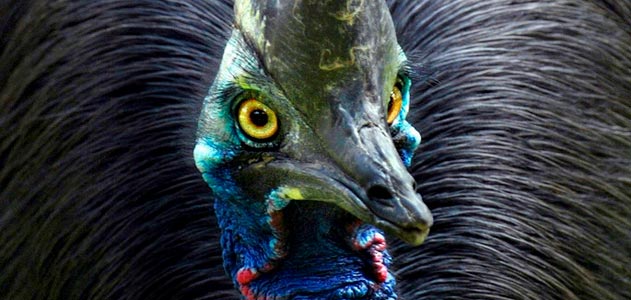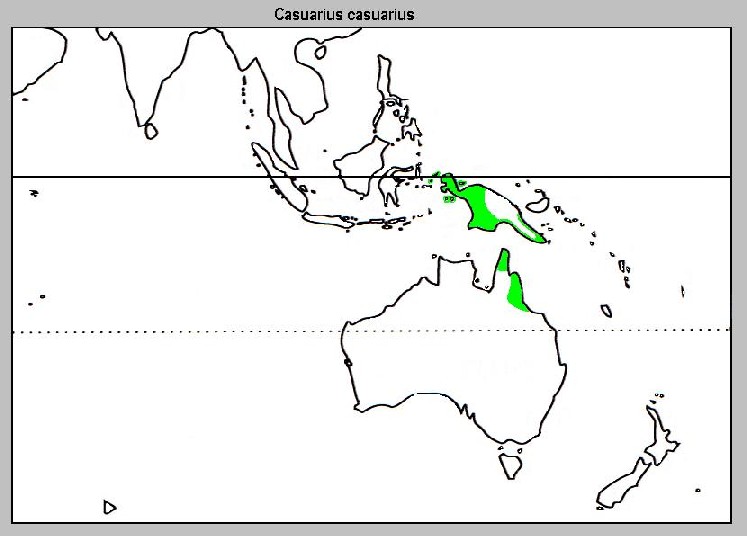Habitat
The Southern Cassowary is native to northeast Queensland, Australia, New Guinea, and the islands of Seram and Aru. It lives in the tropical rainforest, melaleuca swamps, mangrove forests, and sometimes grassland, savanna and palm forests that are nearby rainforest vegetation.
It is listed as endangered by both the Australian government, and the Queensland state government. The primary causes of the species endangerment is habitat loss and fragmentation, other major threats include dog attacks and motor vehicle strikes. Motor vehicle strikes account for 55% of cassowary deaths from 1986-2004. The population of cassowary at Mission Beach, northeast Australia has a population density for adult cassowary of .48 adults/km^2 and for adults and subadults combined is .78 birds/km^2 (Moore, N.D.). The home range of the cassowary found in Mission Beach was around 2km^2, there also is a positive correlation between increasing elevation and home range. Breeding males tend to have a larger home range than non-breeding males. The Southern Cassowary found in New Guinea are being over hunted. This is contributing to the decline in population size and endangerment of the species (Johnson, 2004).
Other species that inhabit the same habitat include the invasive pond apple which the cassowary aids in dispersal of seeds there by exemplifying the invasive issue. Another organism that shares the habitat is the mango fruit!The cassowary interacts with the fruit by sometimes engulfing it in a single bite, and then dispersing its seeds through the casssowary's droppings.
Click here to advance to Adaptation
Click here to return Home
.

